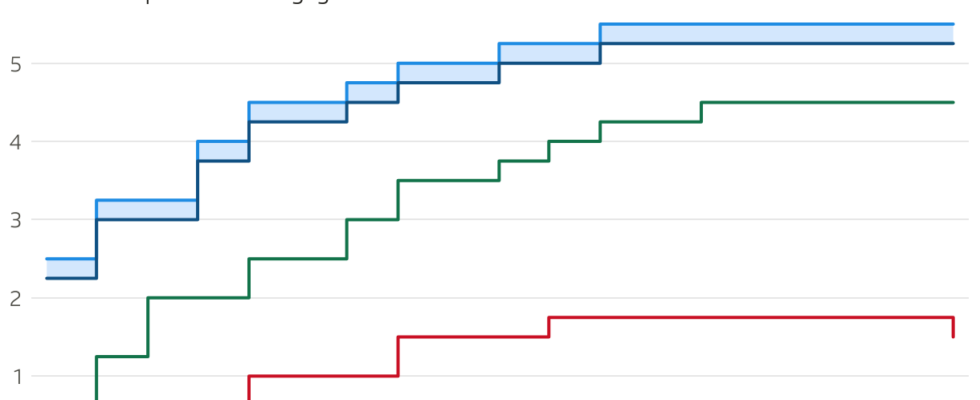- The Swiss National Bank (SNB) lowers the key interest rate to 1.5 percent.
- The central bank announced that the SNB key interest rate will be reduced by 0.25 percentage points.
- By lowering the key interest rate, the SNB is the first major central bank to scale back its tight monetary policy to curb inflation.
- In advance, analysts had expected the SNB key interest rate to remain the same.
“With our decision, we take into account the reduced inflationary pressure and the real appreciation of the franc last year,” said SNB President Thomas Jordan. Inflation has been below the SNB target of 2 percent for several months now. “The interest rate cut also supports economic development.”
However, the SNB will continue to closely monitor the development of inflation. It will adjust its monetary policy again “if necessary” in order to ensure price stability in the medium term.
And the SNB is still prepared to be active in the foreign exchange market if necessary. “We will use this tool immediately if necessary,” said Jordan. There is also no “inhibition” in expanding the balance sheet in this context, if necessary.
Lower inflation forecast
In its latest forecast, the SNB assumes that inflation will average 1.4 percent in 2024. And only values of 1.2 and 1.1 percent are expected for 2025 and 2026. A value of over 2 percent is not forecast for any quarter in the forecast period.
The SNB has thus significantly lowered its forecasts compared to its last assessment in December. At that time, with a key interest rate of 1.75 percent, she had predicted annual average values of 2.2 percent for 2024 and 1.9 percent for 2025.
Falling inflation on imported goods
“We are now seeing that inflation is significantly lower for many groups of goods, especially for imported goods,” said National Bank President Jordan. Inflation is lower for petroleum products or imported clothing, for example. Inflation is somewhat higher for domestic services and rents.
The SNB’s forecasts are always based on the assumption that the SNB key interest rate will remain at the current interest rate level over the entire forecast period. Relatively low inflation forecasts therefore increase the scope for monetary authorities to reduce interest rates. According to economists, further interest rate cuts can be expected in the near future.
Geopolitics brings uncertainty
According to the SNB President, there is also a certain amount of uncertainty. For example, oil supplies could become more scarce due to developments in the Middle East. “That would have a big impact on prices and that could drive up inflation,” he said. However, the risks have not yet materialized.
Before the SNB interest rate cut, the US Federal Reserve had stuck to its course the day before: It left the key interest rate in the range of 5.25 to 5.50 percent and at the same time signaled that it was likely to fall this year – by 0.75 percentage points. At the European Central Bank (ECB), which recently left its key interest rate unchanged, there are increasing signs of a turnaround in interest rates in June.
